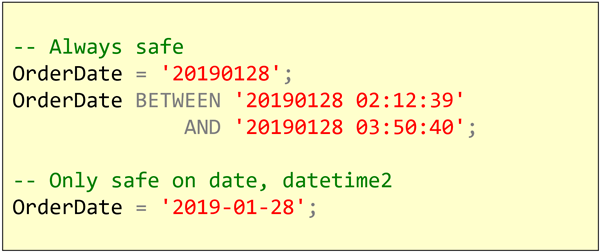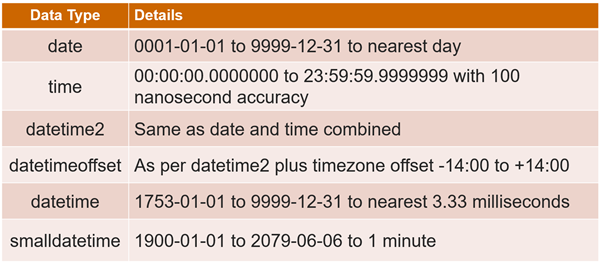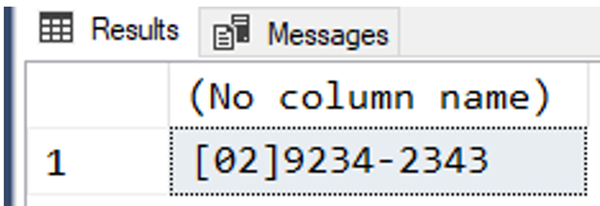T-SQL 101: 54 Literal date and time values in SQL Server T-SQL

Now, one of the challenges when you go to write dates is that there’s no standard separate format in T-SQL for how to write a date. Instead, we need to write it as a string. So it’s very important to come up with a format that will work properly all the time the example.
In the example I have here, the order date is 20190128. If you use that format (8 digits for a date), it’ll always work OK. SQL Server will take the first four as the year, then 2 for the month, 2 for the day and it does that, no matter what your settings are for your session or for your machine.
2020-01-27



